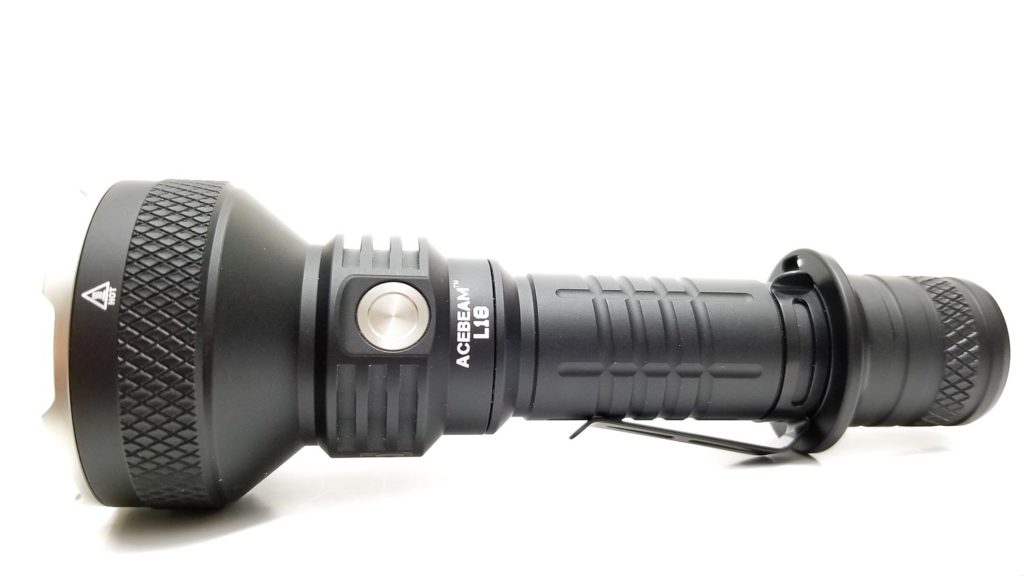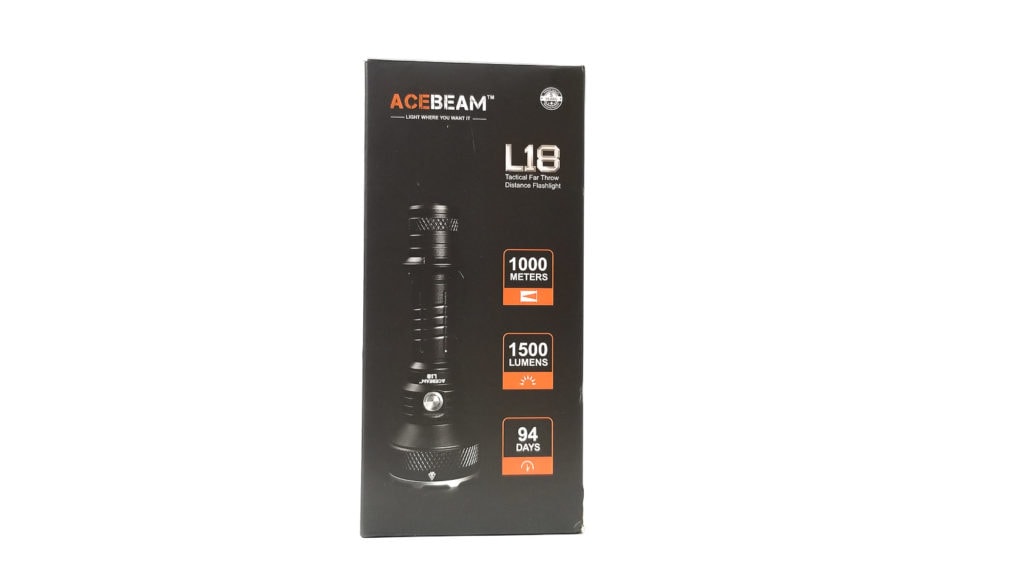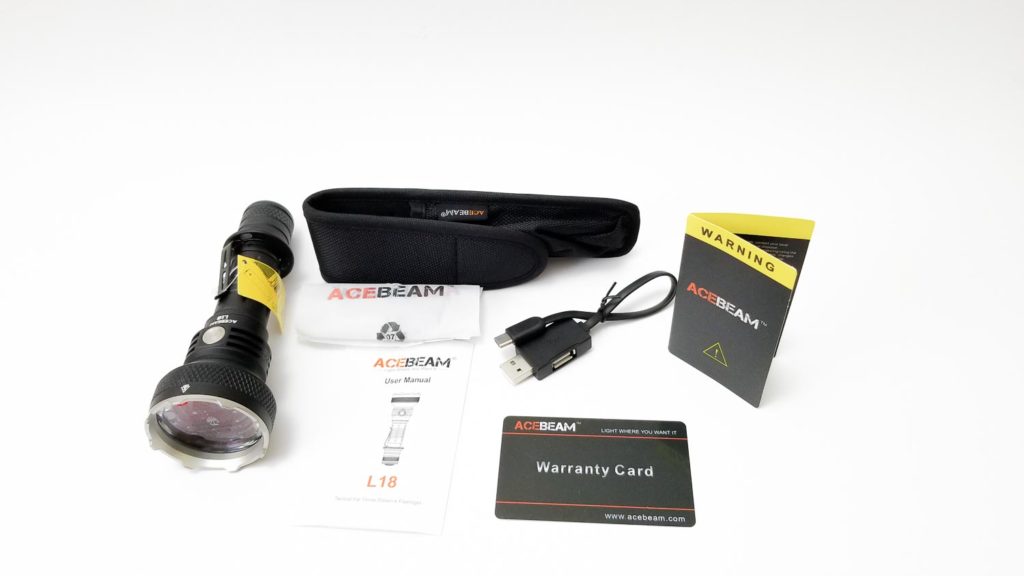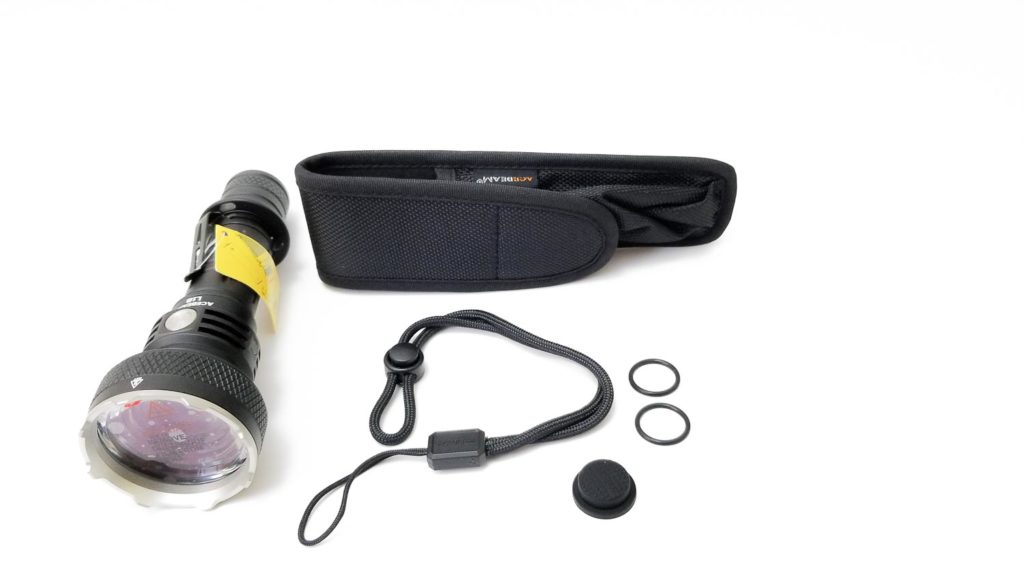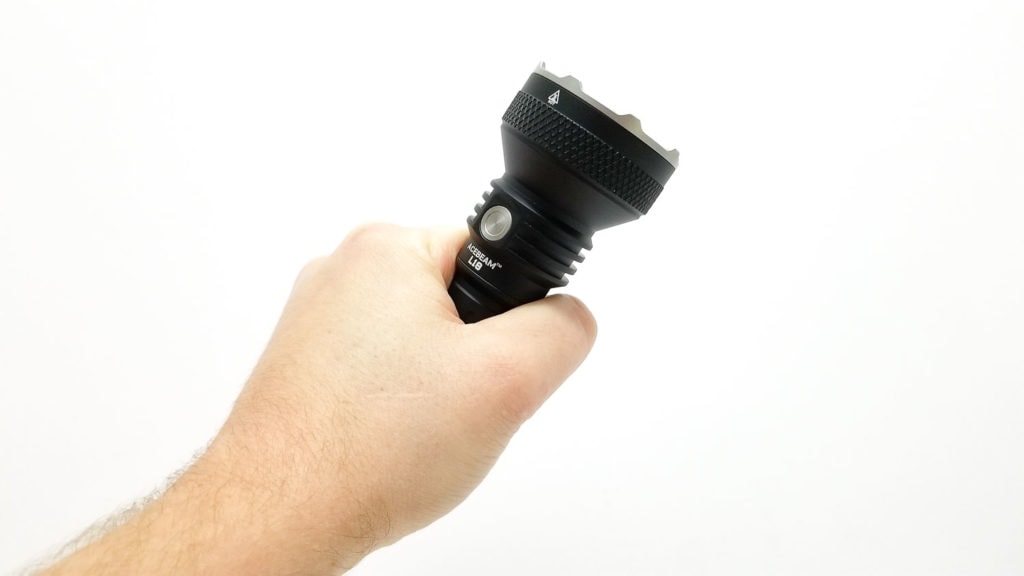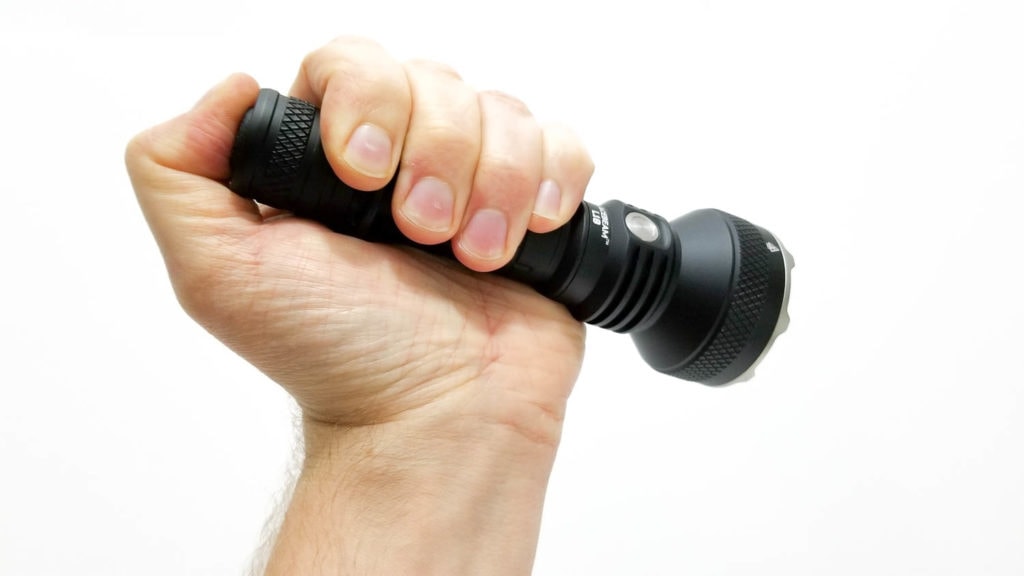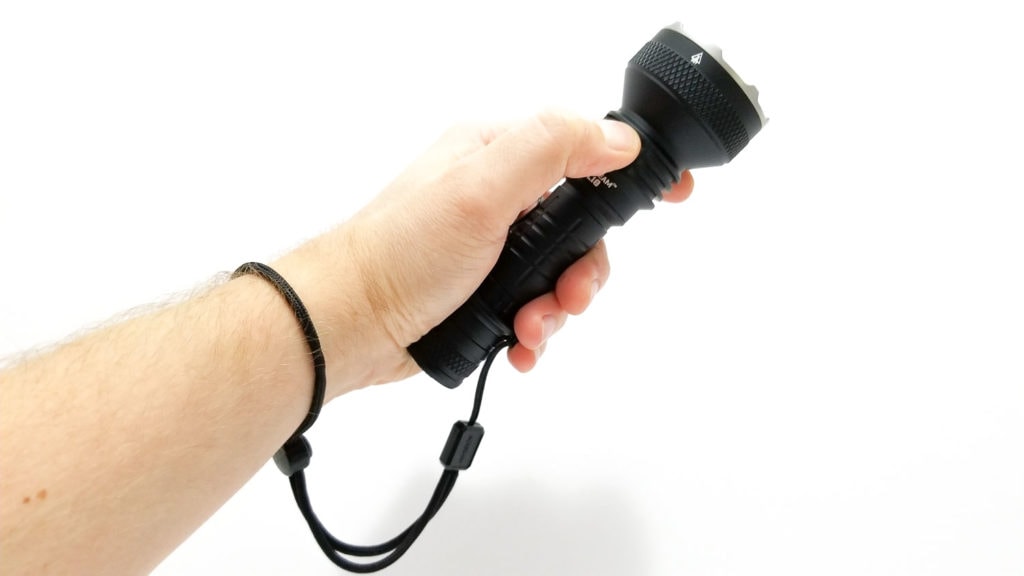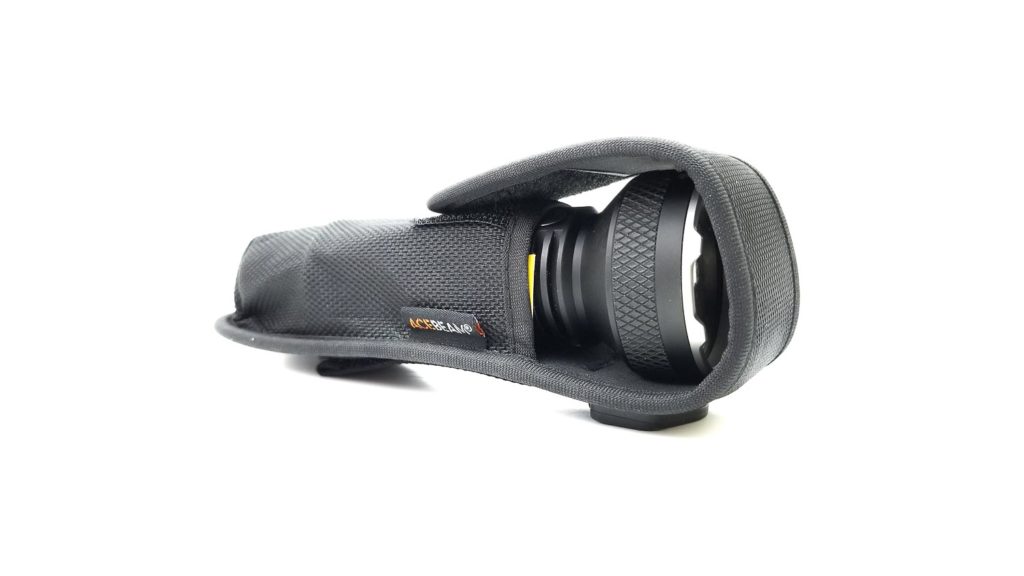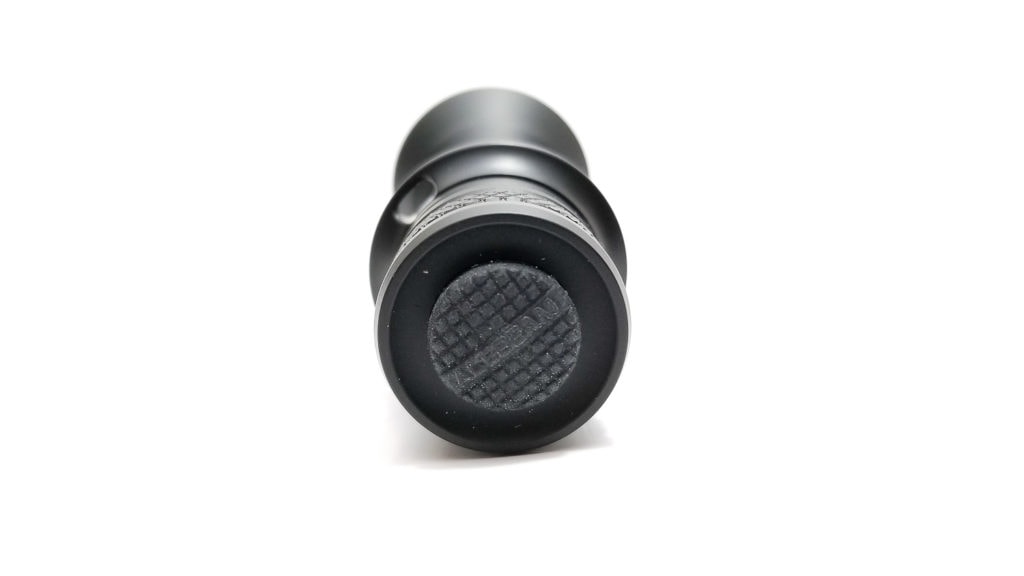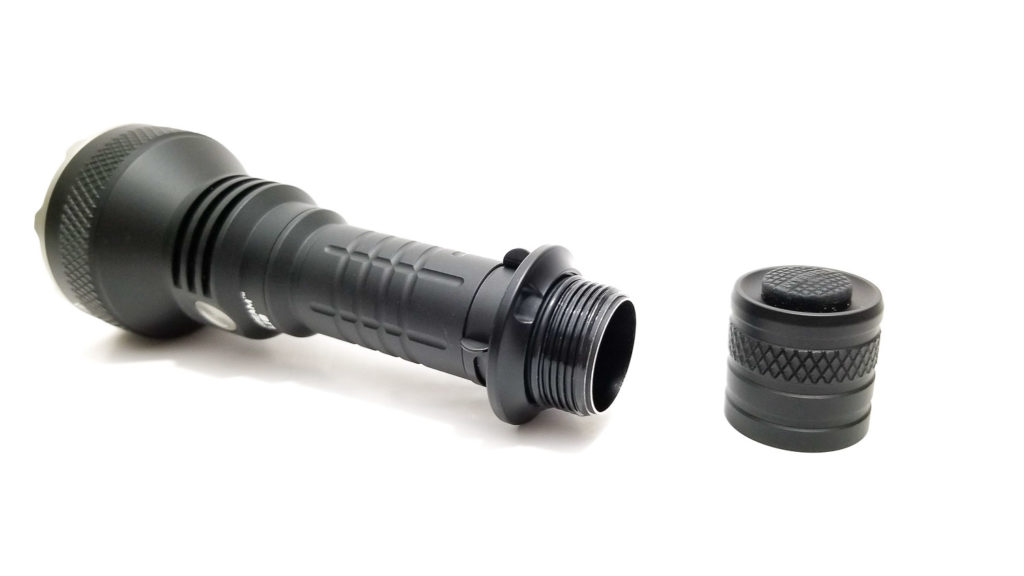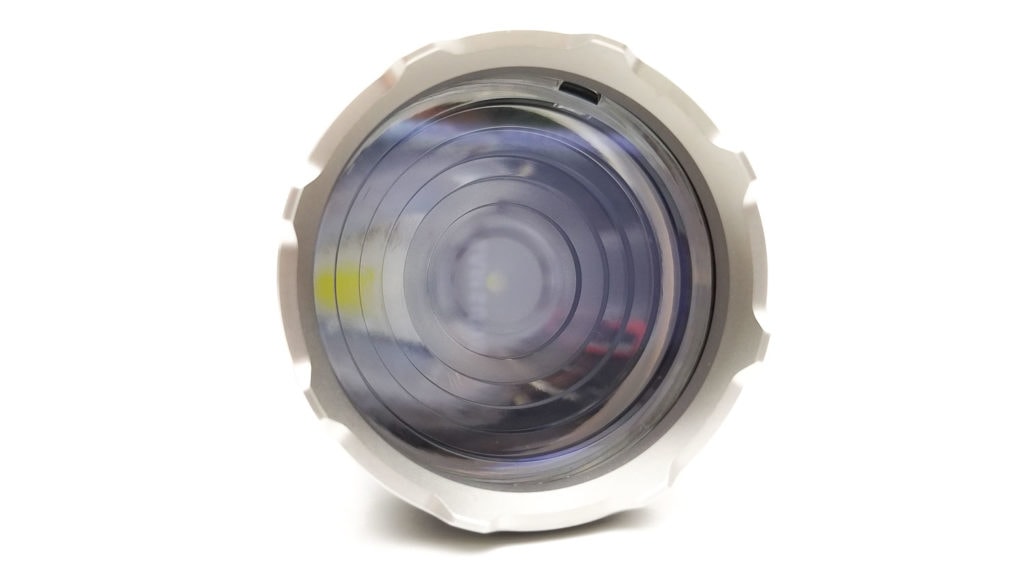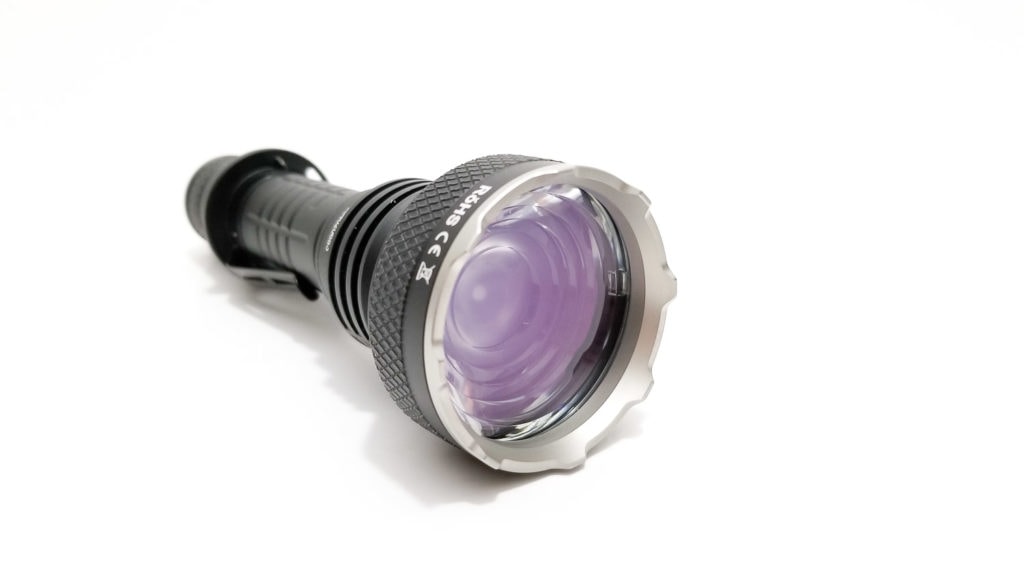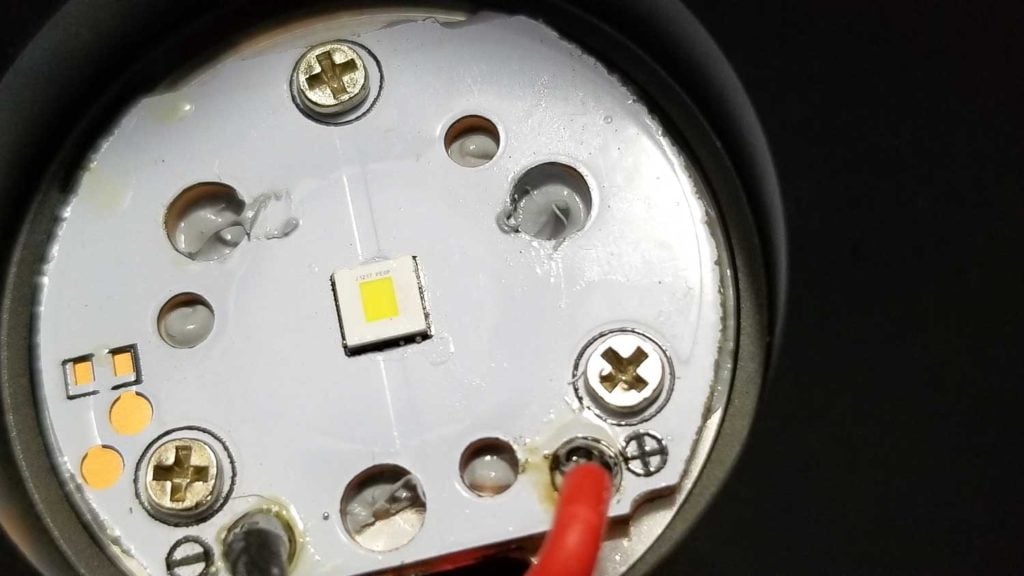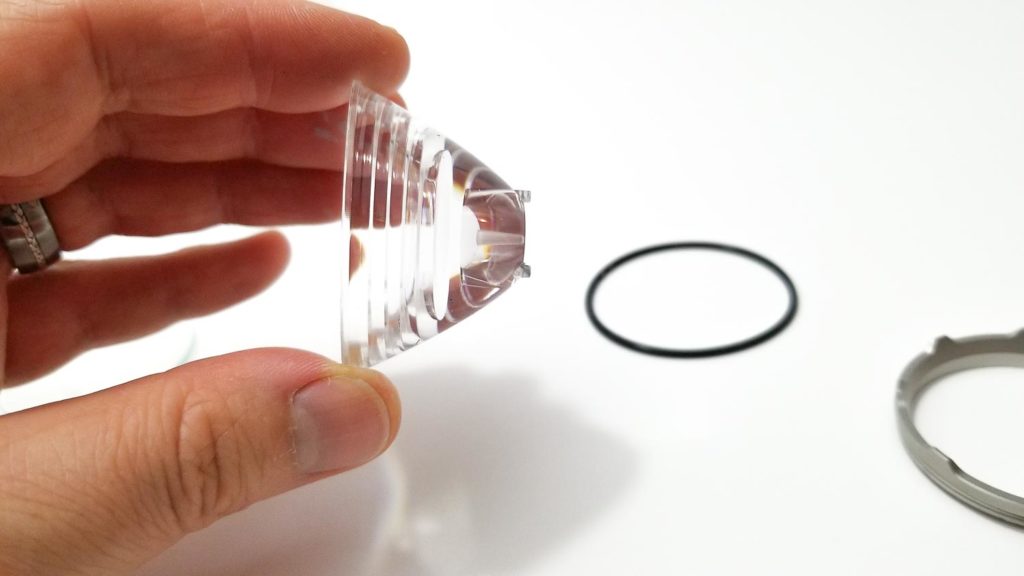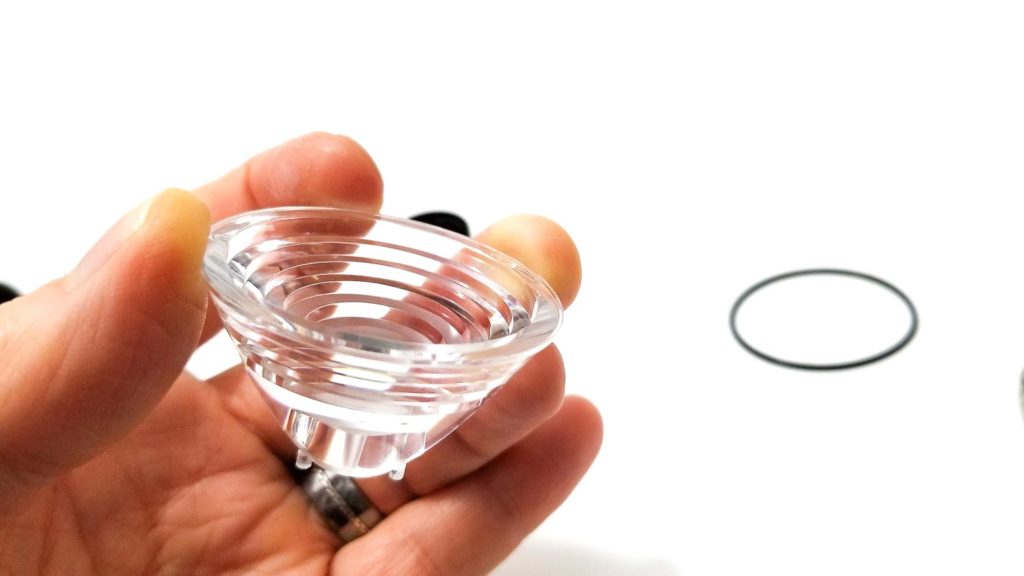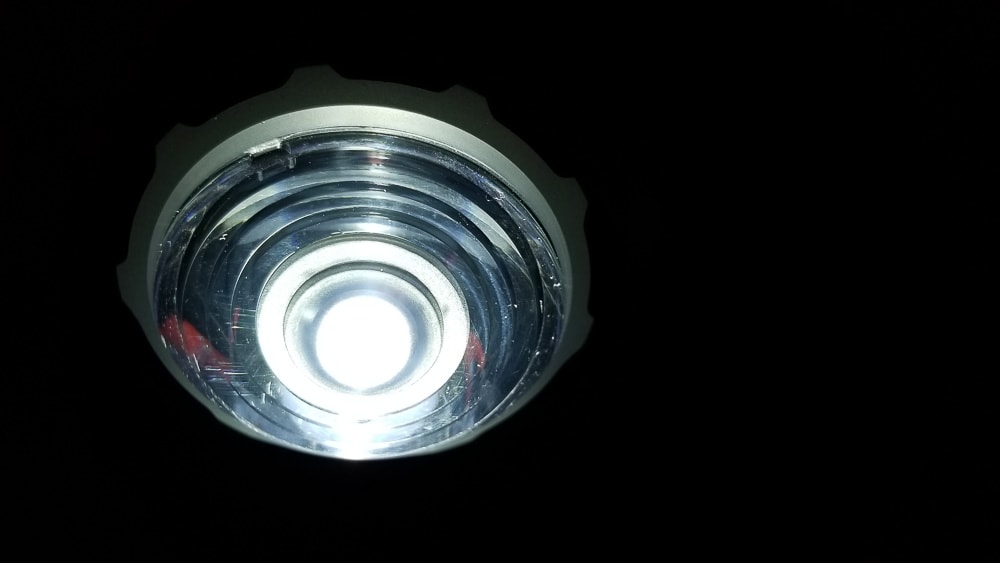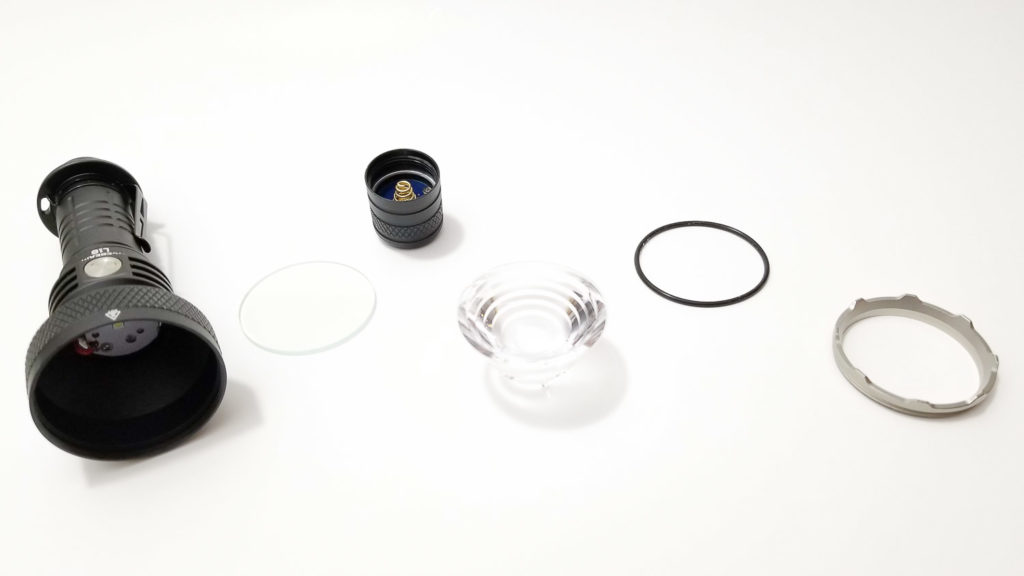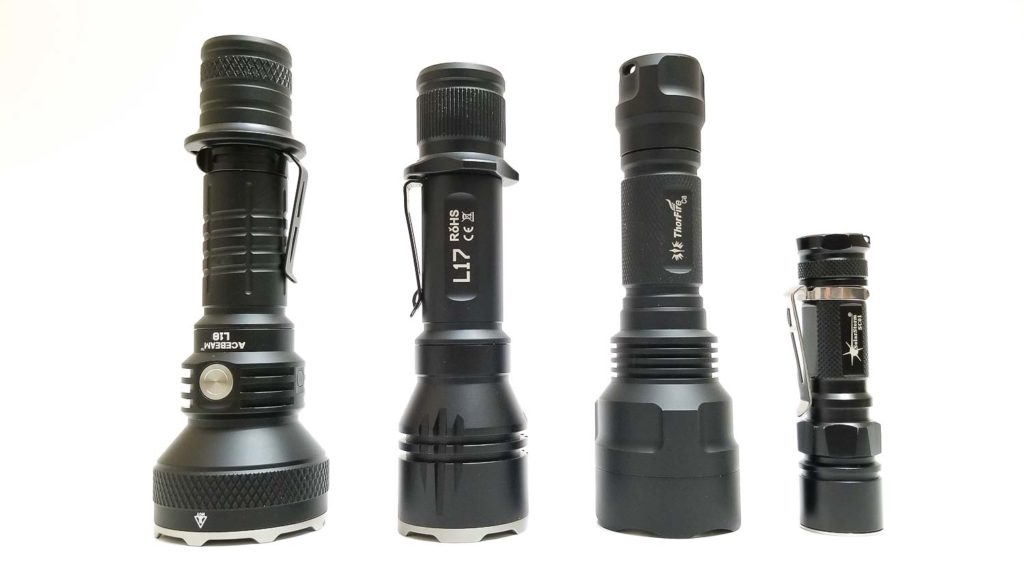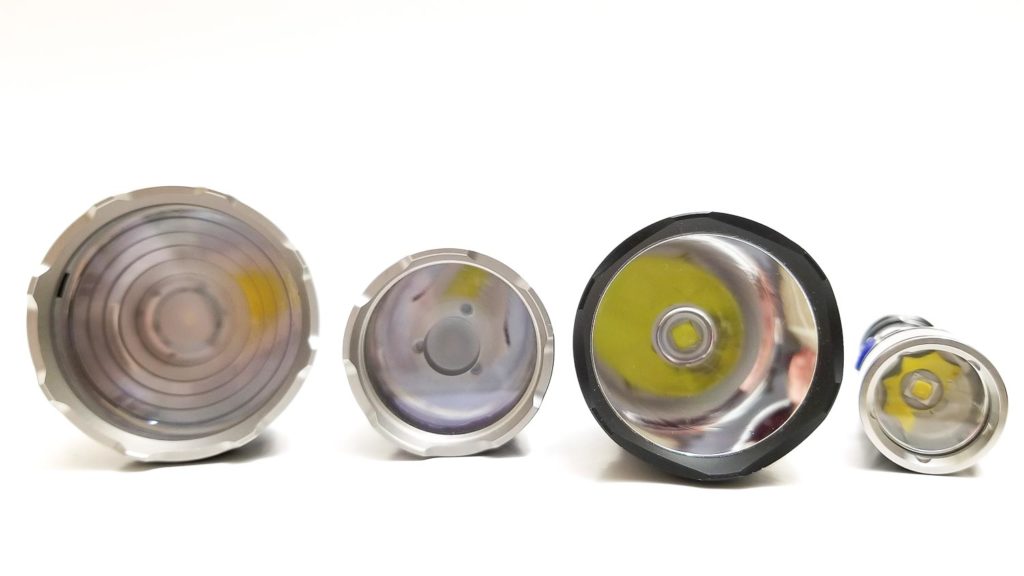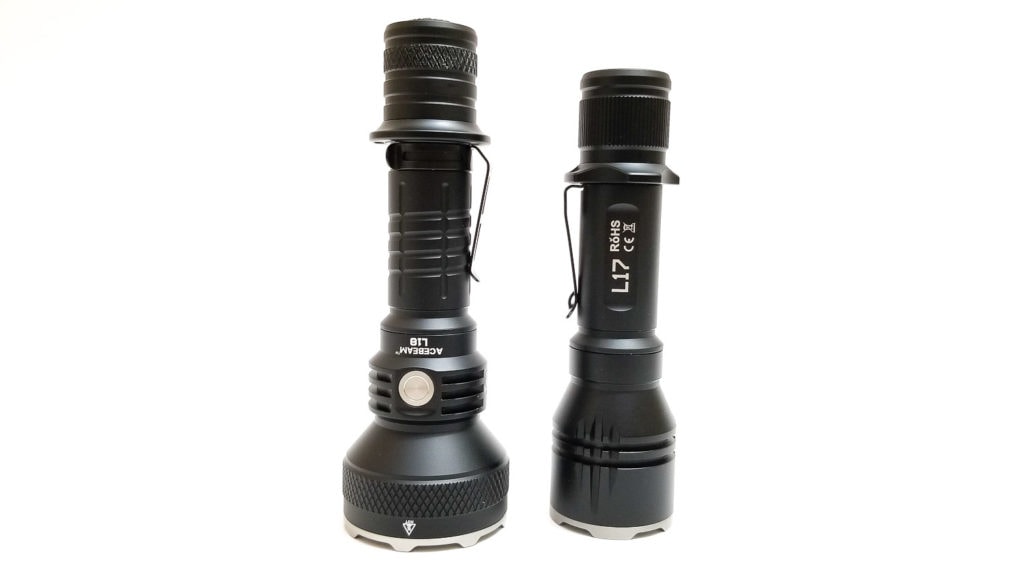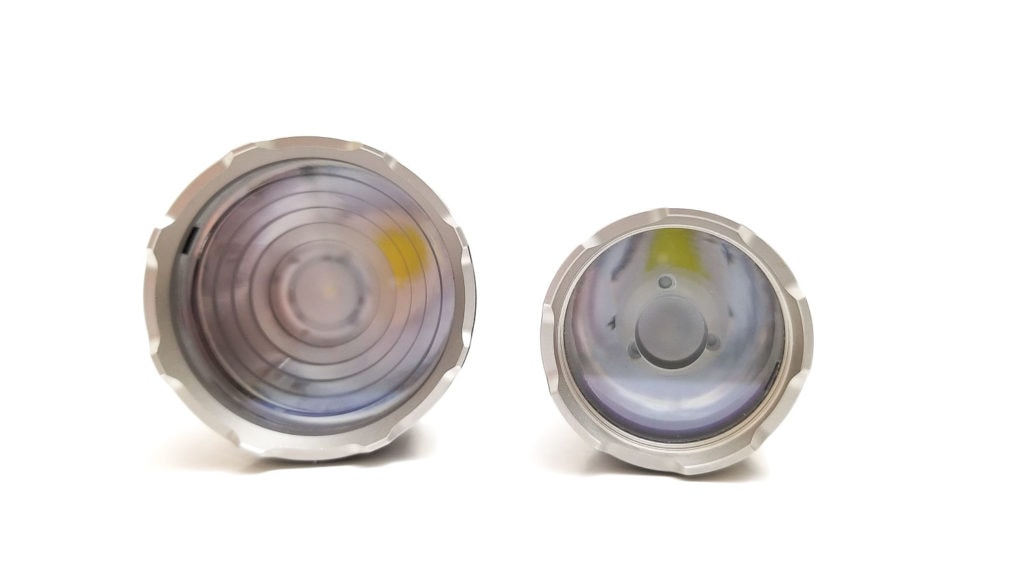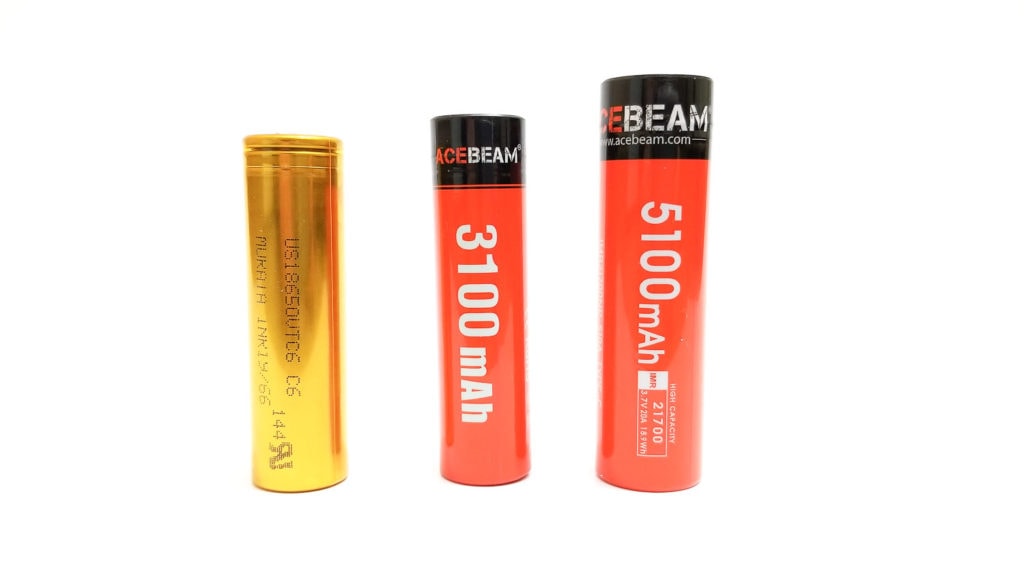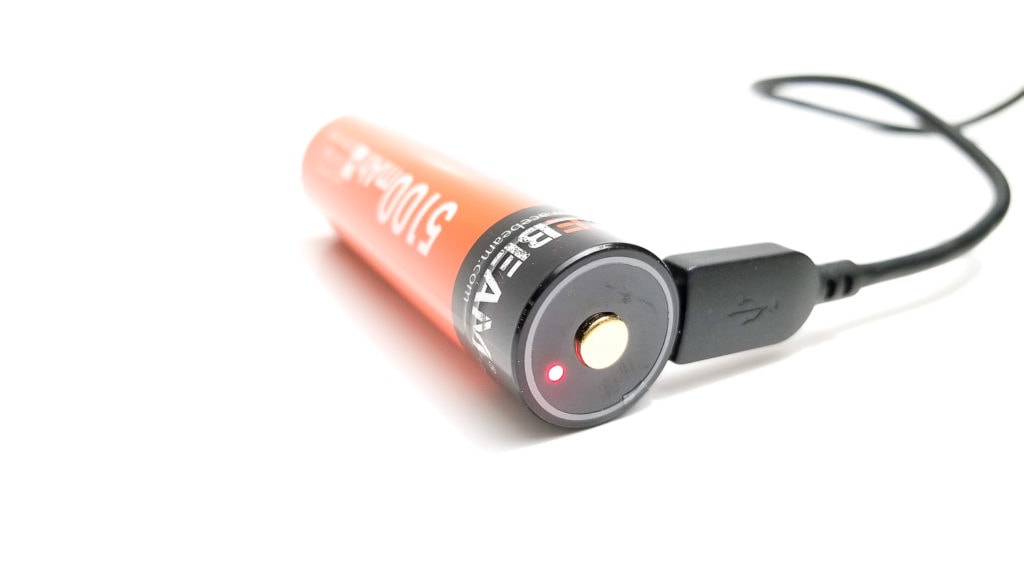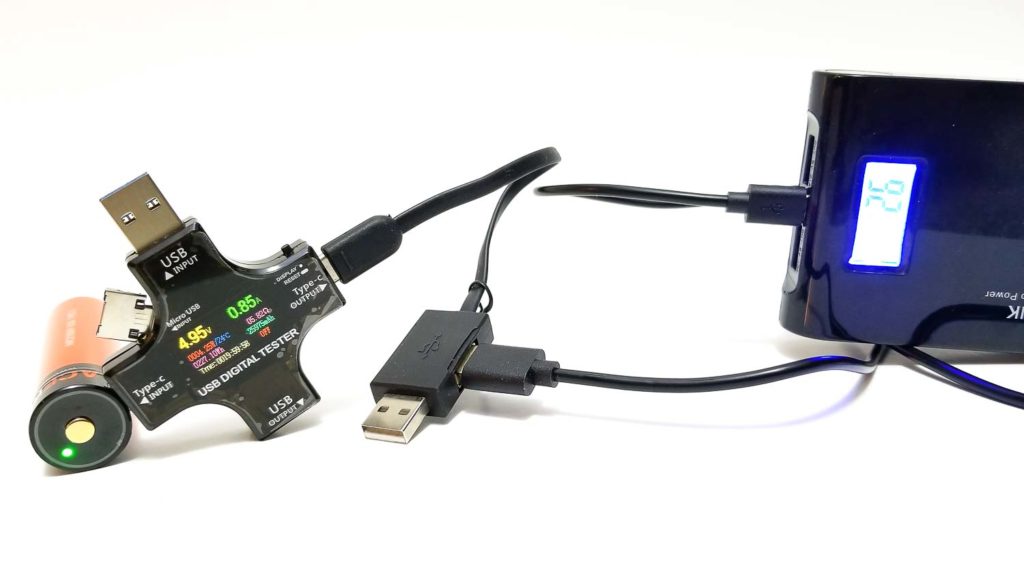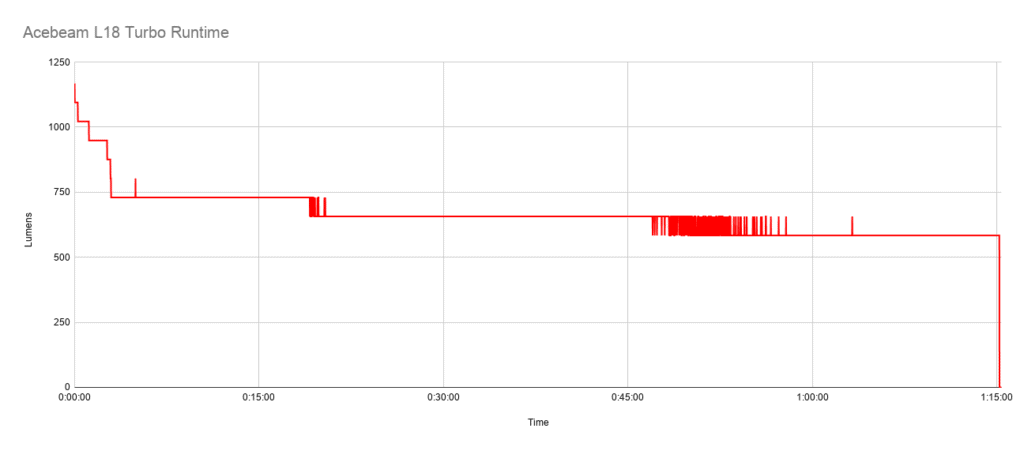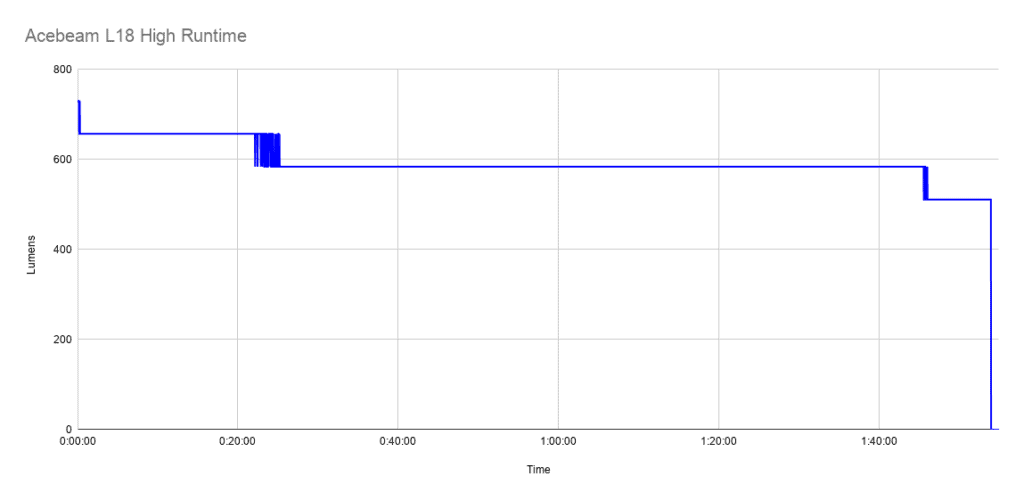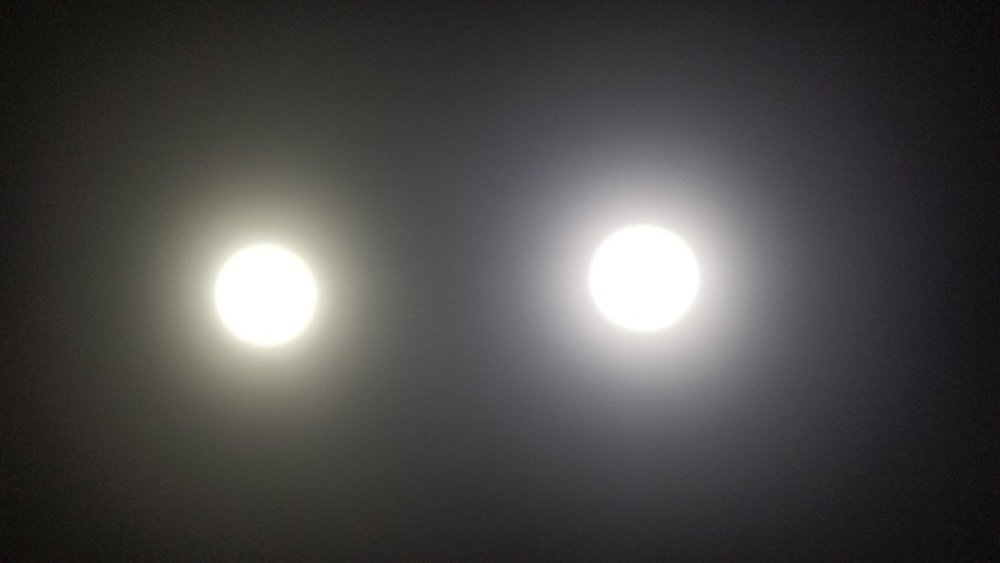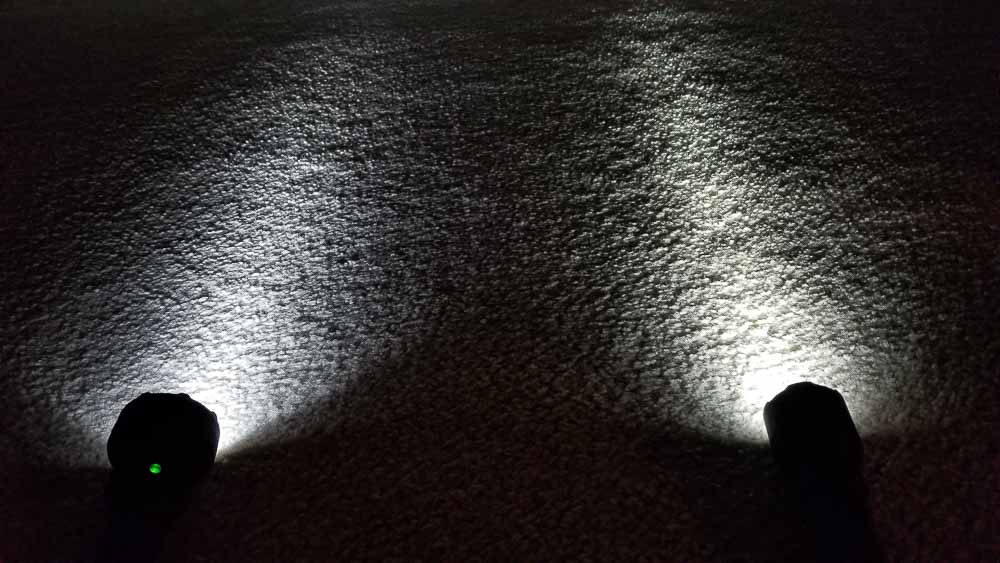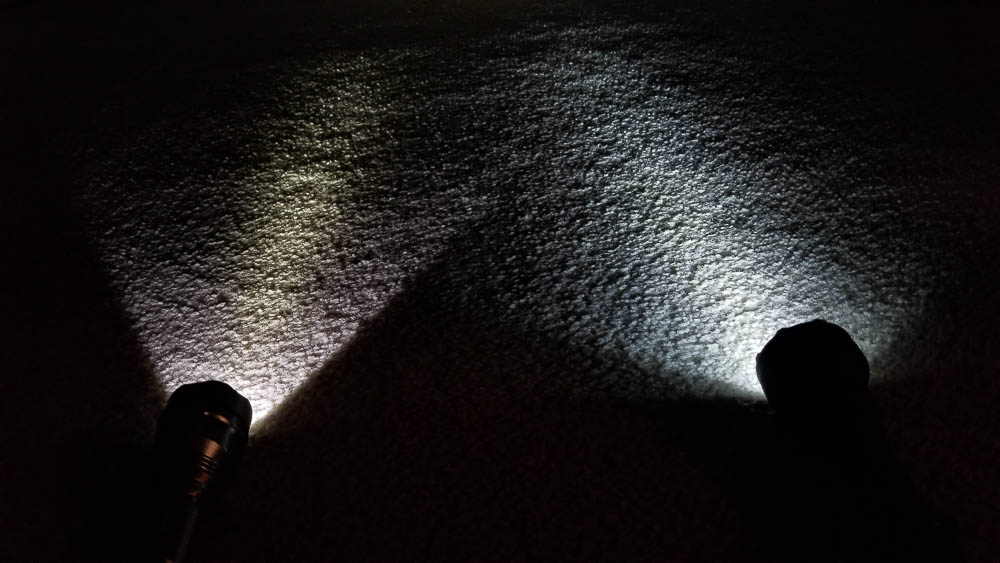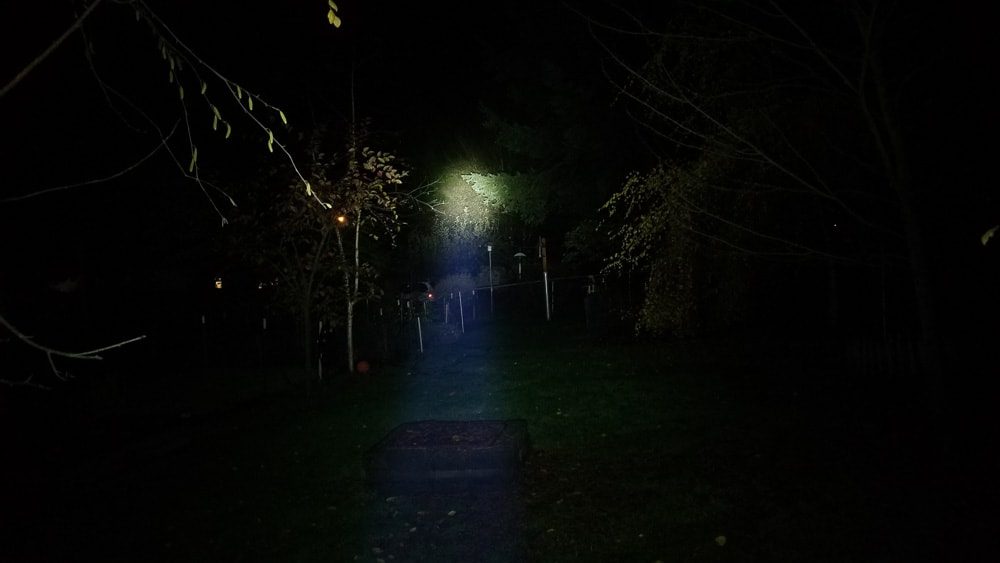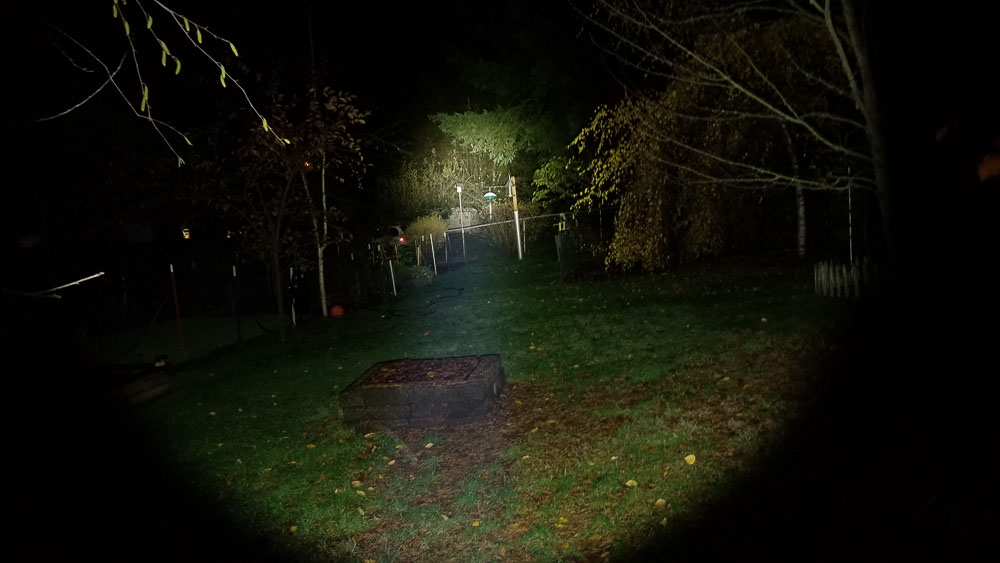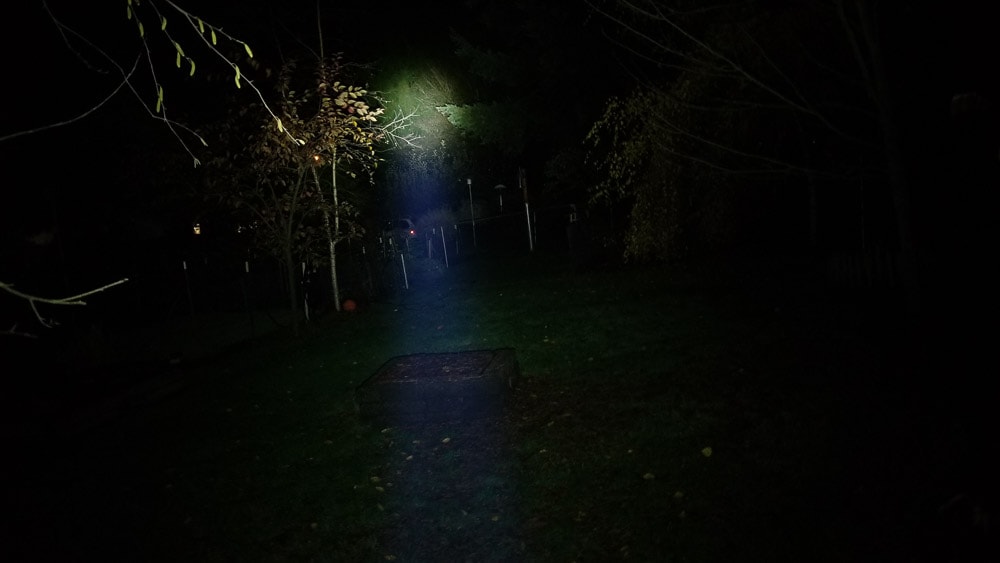1lumen selects and reviews products personally. We may earn affiliate commissions through our links, which help support our testing.
Acebeam L18 review
Specifications
| Brand/model | Acebeam L18 |
|---|---|
| LED | OSRAM KW CSLPM1.TG |
| Lumens | 1500 Lumens max |
| Beam intensity | 250,000 cd |
| Battery config. | 1*21700 |
| Material | Aluminum |
| Modes | 6 |
| Blinkies | Strobe |
| Reflector | TIR |
| Waterproof | IP68 |
| Review date | November 2020 |
INTRODUCTION:
The Acebeam L-series of tactical flashlights have been around for a few years now. Starting with the Acebeam L16 which was introduced in the Summer of 2017, followed by the Acebeam L17 introduced in the Summer of 2020. The L17 featured some interesting design changes, swapping the L16’s reflector for a TIR optic and the Cree XHP35-HI LED for an OSRAM W2 LED. When I reviewed it, although it didn’t fully live up to Acebeam’s specs, I found the L17 to be a great performer, being plenty bright and throwing nearly 700 meters. That’s quite remarkable for a flashlight smaller than a standard C8. Fast-forward a couple months and we have the L18. It features some welcome design changes including a 21700-size battery, side switch, and has a new, larger optic. Acebeam says the changes are good for 1000 meters of throw and 1500 Lumens. Hmm. Is this another bold claim or will the Acebeam L18 actually improve on the L17? I’m still skeptical, but let’s see!
Package quality.
As expected, the Acebeam L18 came in a nice retail package. The overall package is pretty simple with the flashlight riding in a thin molded plastic carrier with all the accessories hiding in the cavity underneath. As usual, Acebeam includes a very generous assortment of accessories with all the necessary accoutrements to get started, minus the battery and a charging cable, which you can buy from Acebeam or use your own. They were nice enough to send the review light loaded with their 5100 mAh protected button top cell with built-in USB type C charging and a weird charging cable/adapter deal. Here’s what you get:
- Acebeam L18
- Nylon holster
- 2 spare o-rings
- Spare switch boot
- Lanyard with cinch
- Manual
- Warranty card
- Lithium-ion battery warning card
The accessories are of good quality and don’t seem cheap. In addition, the lens was covered with a protective film and the battery’s negative end had a plastic insulating spacer. All very well protected and packaged.
Handling of the light
The Acebeam L18 just feels great in the hand with good balance and really grippy finish. The removable blacked-out pocket clip has good tension, and can be rotated freely on the tube for different mounting positions. Behind the clip, there’s a good-sided aluminum ring for a tactical cigar-type grip and easy manipulation of the rear switch. The ring also has the hole for the lanyard, but it is not removable this time. Combined with the finish, I had no trouble with handling the L18. The tube is short enough to reach the rear switch fine with a one handed grip or cigar grip.
Another design change from the L17 is the addition of an electronic side switch. Its metal button sits flush with the tube to prevent accidental activation, but finding it in the dark may be difficult. I think Acebeam thought of that though since it is a different finish than the rest of the light and sits in a flat area. After using it a few times, I could easily find it by feel. The travel is very short, but it feels great with nice audible and tactile clicks.
The rear tail switch has a single function: Turbo. It’s also a true forward clicky, unlike the switch on the L17, which was one of my biggest complaints, so hats off to Acebeam. The click action is very positive and audible. However, the switch boot does protrude a bit so tailstanding was a no-go. Also, don’t set the light on an inclined surface or it will roll away as there are no anti-roll features. The tailcap can be swapped out for Acebeam’s ARPS-R02 remote pressure switch as well if you wanted to mount the L18 on a firearm. With the pocket clip removed, it looks like the tube would fit in 1” scope rings.
Build Quality, Knurling, Threads, and anodization
For quality, it’s typical Acebeam. Great build quality and excellent fit and finish backed up with a 5-year warranty. It looks nice too with the tactical theme. It almost resembles the Olight Warrior X Pro Turbo or Acebeam’s own L30.
The light is made from aircraft-grade aluminum, and the anodizing is type III. As usual, it’s perfect; no thin areas, and no blemishes. This finish is one of my favorites-it’s more matte than glossy and feels almost brickish, but not gritty or rough. Perfect for gripping with wet, gloved, or sweaty hands.
The machining is excellent. No burrs or machine marks, and all the edges and heat sink fins are nicely beveled with no sharp edges. The strike bezel crenulations are a little more aggressive than the L17’s and would work fine for protecting the lens, breaking glass, and for self-defense. Unlike the L17, there’s some diamond knurling on the tailcap and head near the bezel. In addition, there are grooves on the battery tube for gripping, which I think work great. The electrical contacts are all gold-plated, and there are thick gold-plated springs on the driver and tailcap. Even though it’s mechanical, the tailcap switch PCB has 2 contact points. One interfaces with a sleeve in the battery tube and is probably for the driver’s memory function.
The tail cap has a single o-ring for sealing, and it’s pretty thick. The threads are thick square cut and fully anodized with plenty of lube and are buttery-smooth. For water resistance, the L18 is rated for IP68. When I tried to unscrew the bezel I found it wasn’t glued! This gave me a chance to peek inside and check out the innards (more on that in the next section). I did notice the head is sealed with a good-sized o-ring.
The included lanyard is one of the better quality ones with an adjustable cinch so you can tighten it to it around small or large items. There is a holster included, and the L18 fits nicely. It seems like a quality holster with a plastic hanger and Velcro-backed belt loop on the backside.
LED, LENS, BEZEL, AND REFLECTOR
The LED remains unchanged from the L17 except this time you can have any color you want as long as it’s white. No red, blue, or green versions are offered. With the bezel off and the optic out, I confirmed it is the OSRAM KW CSLPM1.TG. For those not familiar, this is the 2mm2 (die size) version of the OSTAR Compact Projection LED. It’s a domeless 3030 footprint emitter designed for stage and effect lighting. It can be driven harder than the 1mm2 version so it makes more lumens, but the beam is not as intense.
Like the L17, the Acebeam L18 sports a PMMA plastic TIR (total internal reflection) optic. The optic is protected by an AR-coated glass lens and aside from being larger (44.9 mm vs. 33.9 mm diameter), it’s an interesting design, unlike any TIR optic I’ve seen. The inner section is a hollow cavity that’s stepped inward with a hollow section above the LED with a center projection pointing downwards towards the LED die. The center is frosted as well.
According to Acebeam, this is meant to soften the beam and improve light quality. The new optic does add more spill than the L17 and the hotspot is tighter and more focused. In addition, it’s brighter and more intense. I noticed the tint has shifted to the bluer side as well. On the white wall, you can really tell the difference in beam color and intensity. The blue color tells me either they’re using a cooler white tint or the LED is being overdriven a little. On carpet, it’s easy to see the extra spill and it almost matches the SST40 C8 I compared it to on both the white carpet beam profile and on the white wall beamshot.
Dimensions
The Acebeam L18 is a little bigger than the L17. Taller, wider head, and the body is a hair thicker to accommodate the 21700 cell vs. an 18650. Otherwise it’s still pretty compact.
- Height: 15.4 cm / 6.06 inches
- Head diameter: 5.2 cm / 2.04 inches
- Body diameter: 2.54 cm / 1 inch
Weight:
- With battery: 147.5 grams / 5.2 oz.
Tactical Flashlight Comparison
Some flashlight size comparison
Image 1-2 Left to right: Acebeam L18, Acebeam L17, Thorfire C8, Solarstorm SC01 AA/14500 EDC light.
Image 3-4: Acebeam L18, Acebeam L17
Battery comparison: L to R Standard 18650, Acebeam 21700 (78mm long), Acebeam 18650 (70mm long).
Driver & User Interface:
Hear me out, I like Narsil, Andruil, Bistro, and the like, but I really have a soft spot for simple user interfaces with no complex menus, and no fiddling with mode groups-just turn it on and go.
I liked the L17’s UI, but I like the L18’s even more with the addition of the rear switch and side switch. It’s very user-friendly with 6 standard modes including turbo and moon, and a single strobe. The side switch controls the modes: moon, low, medium 1, medium 2, high, and strobe. The rear switch is only for turbo. Operation is simple: Press the side switch for on/off. To cycle through the modes hold the switch down: L-M1-M2-H. The cycling is quite a bit faster than the L17, which was really nice.
It has last-mode memory as well. To activate, switch to the mode you want, unscrew the tailcap until the light turns off, then tighten and the light will start in the last mode. Moon, strobe, and turbo are not memorized. There is an electronic lockout. From off, press and hold the side switch for around 5 sec. It turns on in moon, turns off, and is locked. Reverse the procedure to unlock.
From OFF:
- Press and Hold: For 3 seconds activates moonlight. After 5 seconds, electronic lockout.
- Single-click: Turns on in last memorized mode
- Double-click: Turbo
- Triple-click: Strobe
- 4x click: Strobe
From ON:
- Press and Hold: Cycles through the brightness levels from last memorized mode.
- Single click: Turns off
- Double click: Turbo
- Triple click: Strobe
- 4 clicks: Strobe
Mode memory:
- Yes, last mode memory.
Low voltage warning:
- Battery indicator light: Green > 30% Red 30% to 10% Flashing Red <10%. LVP will drop the output very low then turn the light off.
Strobe/blinkies
- 1 strobe
Lock-out mode:
- Electronic lockout is activated by pressing and holding the switch from off for 5 seconds.
PWM
- None!
Additional info: Turbo is also accessible with the side switch with a double click from on or off. The indicator lights up only when the light is turned on to show battery condition. If you have a mode selected using the side switch and activate turbo, the light turns off when you release the rear switch. Turbo and moonlight are not memorized. You can also lock the light out by unscrewing the tailcap slightly. The LVP kicks in around 3 volts under load. I measured the battery after the high runtime and it was 2.85 volts.
Batteries & Charging
The L16 and L17 both used 18650 cells, but the Acebeam L18 uses a 21700-size lithium-ion cell. Acebeam doesn’t include a battery with the L18 (it’s an option), but be aware that the Acebeam cell is a full 78mm long (including the button top) so a shorter 27100 cell may rattle around in the battery tube. I didn’t have any 21700’s on hand to test, but in the L17, my standard flat-top and solder-blobbed 18650’s rattled around quite a bit. A protected button top is your best bet.
Acebeam sent the review sample with their IMR21700NP-510A 5100 mAh protected button top with USB type C charging port. It’s rated at 20A discharge, and Acebeam says it can double as a power bank. included a USB type C plug on a short 3 inch cable with a USB male and female input/outputs. This device is for charging the battery and for the power bank function. I tried charging the battery with it, but that was really difficult since the lead is so short. You’re better off using it for the power bank.
Using the included adapter and a regular USB type A to C cable, the cell charged at 5.2V 1A, so that means it would take around 5 hours to charge a depleted battery. Not exactly fast charging. I don’t have a charger big enough to fit a cell this long, so I can’t say whether it can be charged that way or not.
For the power bank side, I tried charging my tablet using the adapter and my USB tester showed around 4.98V and 1.44A, so around 7 watts. Not too bad. You should be able to mostly charge a 3000 mAh cell phone with the battery.
Performance
Okay so, the L18 has some welcome upgrades, but do those mean more performance?
Amp measurement
I used my Radio Shack T-RMS multimeter with 16 gauge wire directly in the meter to measure the current. This was tricky on the L18 since there are two contact points on the battery tube. I discovered quickly (with some sparks) that one is for turbo only, and the other is for the e-switched modes. The contact points are tiny ridges, so getting 16 gauge wires on them was challenging. Here’s what I came up with:
- Moon: 0.6 mA
- Low:120 mA
- Med1: 430 mA
- Med2: 1.06 A
- High: 2.80 A
- Turbo: 8.6 A
At 8.6 A for turbo, the LED is definitely being driven harder than the L17’s LED (which was around 7 amps). The parasitic draw current was 0.16 mA.
Runtime graph
The runtime test was done for turbo and high in the 30 cm integrating sphere. As usual, I used the Digi-Sense 20250-00 data logging luxmeter, and temperatures were measured with my Ames Instruments non-contact thermometer. The battery was fully charged for each test. For the turbo test, one thing stood out: it gets roasting hot which tells me the LED is being driven really hard. I checked the temperature for the first 30 minutes.
The first step down for turbo happened at 14 seconds, and gradually kept stepping down over the next minute until leveling off. It maintained around 530 Lumens with very minor fluctuations as the light thermally regulated until turning off at 1 hr. 15 minutes. The thermal regulation is not aggressive at all and the temperature rose to a max of 74.9 C, or around 166 degrees F. That’s dangerously hot for bare skin so be careful on extended turbo runs. I could barely touch the lower half of the battery tube during the turbo test.
Acebeam’s spec for turbo run time is 1 hr. 30 minutes, so not far off from my time. Overall, it’s a good performance from the light, keeping the output up for so long. I would have liked a little more step down before it turns off though.
For the high test the output stayed consistent at 584 Lumens and stayed at that level until the gradual step down to 511 Lumens at the 1 hr. 46 minute mark. The protection circuit on the battery pulled the plug abruptly after 1 hr. 54 minutes. Again, same behavior as turbo-with only the LVP warning from the indicator light before the protection kicks in.. Acebeam’s runtime figure for high is 2 hr. 15 min, so not too far off. I am sure the times would get better as the battery was cycled a few more times. Temps were not as high as turbo, only around 50 C average.
Acebeam’s spec for turbo run time is 1 hr. 30 minutes, so not far off from my time. Overall, it’s a good performance from the light, keeping the output up for so long. I would have liked a little more step down before it turns off though.
Lumen measurements (for each mode)
Lumen measurements were taken using my homemade 30 cm integrating sphere calibrated from light with known output using the Digi-Sense 20250-00 data logging luxmeter. All readings were taken from the fully-charged battery at 30 seconds. I did not measure strobe mode. My numbers are on the left, and Acebeam’s advertised in the far right. Moon was so low it didn’t register on my luxmeter.
| Mode | Measured | Specs: |
|---|---|---|
| Moon | Too low, no reading | 1 lm |
| Low | 54 lm | 53 lm |
| Medium 1 | 201 lm | 190 lm |
| Medium 2 | 394 lm | 390 lm |
| High | 723 lm | 750 lm |
| Turbo | 1051 lm (1249) @ turn-on) | 1500 lm |
While I got close to advertised with the lower outputs, turbo was off. Even at turn on it was still over 200 Lumens short. There’s no question that the LED is being driven really hard. Even with the increased thermal mass and extra heatsinking, the output drops pretty fast after 30 seconds.
Throw numbers:
Acebeam claims the L18 throws 1000 meters, and to be honest, I am a bit skeptical going into this since the L17 with the same emitter could only manage around 700 meters (at 5 seconds) vs. 802 advertised. I used the Uni-T UT383S luxmeter for this test. Throw numbers taken at 10 meters at 5 seconds. Acebeam’s advertised numbers on the far right.
| Moon | N/A no reading | No data |
| Low | 9600 cd= 195.95 m | 12,100 cd 220 m |
| Medium 1 | 35,100 cd=374.69 m | 34,040 cd 369 m |
| Medium 2 | 73,900 cd= 543.69 m | 67,600 cd 520 m |
| High | 137.1 kcd= 740.54 m | 121.45 kcd 697 m |
| Turbo | 215.5 kcd= 928.43 m | 250 kcd, 1000 m |
From the table we can see that the L18 has put up numbers more in line with the advertised specifications. Acebeam didn’t list any figures for the moonlight mode, and the luxmeter did not return any readings. It’s hard to say whether the new optic or the increased drive current (or both), is improving the throw, but the L18 throws great for a compact tactical flashlight.
The outdoor beamshots don’t show much of a difference between the two lights, aside from the extra spill. However, the photos don’t do the lights justice and it’s hard to appreciate just how well these throw! It’s 40 meters to the fence and about 90 meters into the neighbor’s yard beyond the fence. Compared to the SST40 C8, the hotspot and beam are more intense, but the SST40 makes more Lumens.
Beamshots
- White wall beamshot from 1 meter. Acebeam L17 on left, Acebeam L18 on right.
- On carpet: Acebeam L17 on right L18 on left.
- On carpet: C8 SST40 on left, Acebeam L18 on right.
Disclaimer: This flashlight was sent to me for review at no cost, by Acebeam. I have not been paid to review, nor have I been holding back on problems or defects.
OVERALL CONCLUSION
Pros
- Side switch and rear forward switch
- Great built quality and finish
- 21700 battery
- Nice UI
- More spill
- Great throw
- 5-year warranty
Cons
- Gets real hot on turbo
4.5 stars: ★★★★★⋆
One of the things I really appreciate about Acebeam is they are a very forward-thinking company. They listen to the customers and put those suggestions into new (or improved) products. The L18 is a perfect example of this. Acebeam has delivered a slick flashlight with some very welcome upgrades over the L17, including the 21700 size cell, a proper rear forward switch for turbo, and a side switch that controls an improved UI. Those are all great, but the main thing is what they do for overall performance. In this case, quite a lot, since my results showed the L18 putting up impressive throw numbers over the L17. I really appreciated the improved side illumination from the new optic also. It is looking like optic-based throwers are here to stay, and it’s nice to see Acebeam improving upon and utilizing his technology in flashlights. Overall, I give the L18 a solid 4.5 stars.
Acebeam L18 discount code
Get a whopping 15% off your next order at Acebeam.com with the following discount coupon: AE15. Simply add the coupon code at your checkout.
1lumen selects and reviews products personally. We may earn affiliate commissions through our links, which help support our testing.
